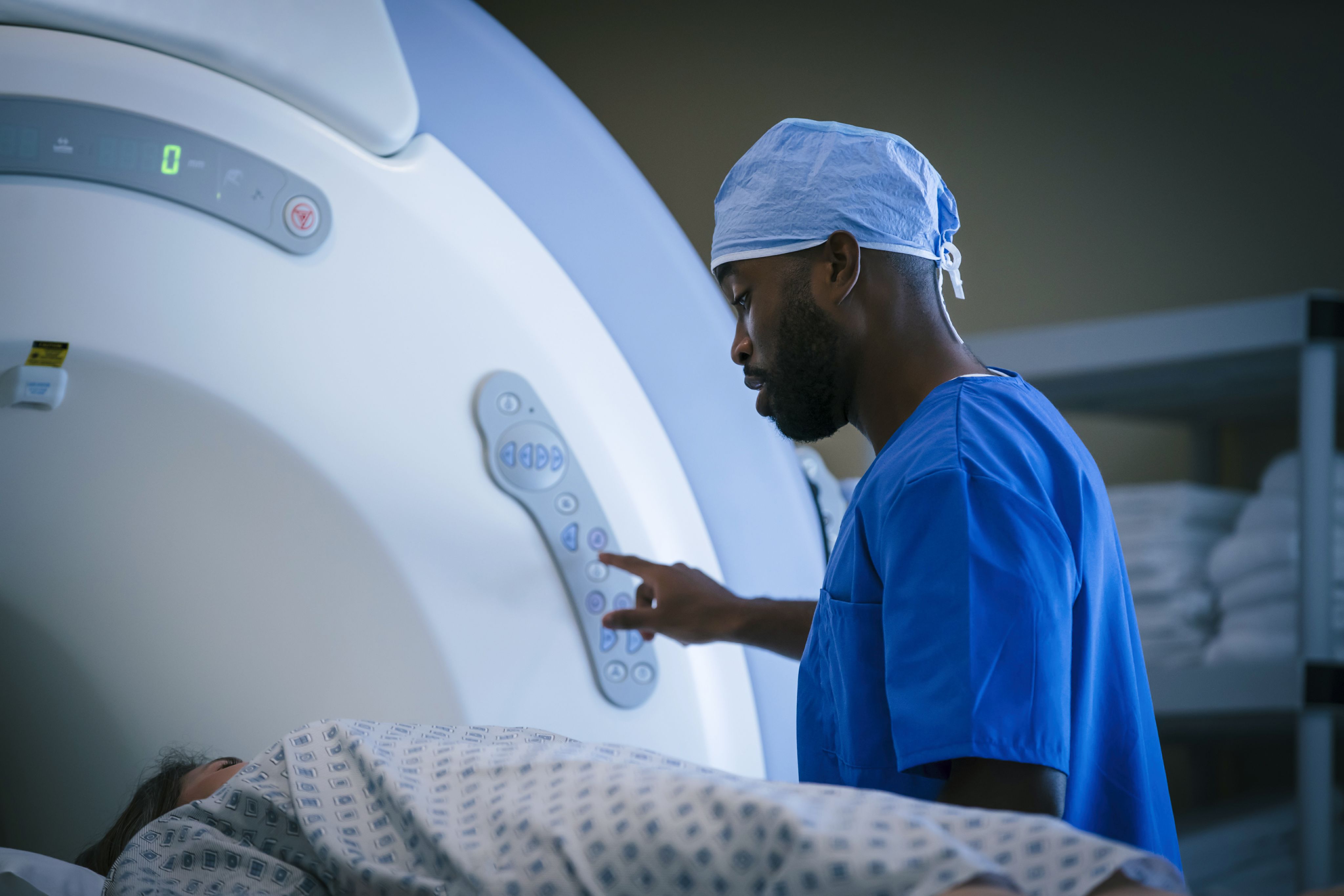Workplace survey:
The shape of the profession
Dean Rogers, executive director of industrial strategy and member relations, shares headline findings from SoR's latest workforce survey, carried out in 2023
Dean Rogers
Dean Rogers
Each year, the Society of Radiographers carries out its Workplace Experience Survey, to investigate the changes and trends within the profession.
Radiographers are asked to complete a short survey, covering key topics like workforce numbers, feeling safe at work, and whether they would recommend their work to others.
The SoR’s first Workforce Experience Survey was published in 2022, and provided some important insight and useful feedback on workplace realities across the NHS.
For 2023, the survey also incorporated answers from SoR members from the private sector - an important development as it allows the Society to compare responses between NHS and independent sector radiographers.
Key results
Some of the key findings from the 2023/24 survey include:
- Almost one in five returnees had spent less than five years in the professions. This reflects how radiography is growing quickly and addressing poor working cultures will be key to professional retention.
- Some in the independent sector have never worked in the NHS, but the overwhelming majority had worked in the NHS before moving to the independent sector.
- Nearly 90 per cent of independent sector returns were from people who had worked there more than five years. The evidence suggests when someone joins the independent sector they stay for a significant period, although there is also some evidence that they may eventually return to use experience and expertise and/or to practise their full range of skills.
- Almost half of respondents who had left the NHS said their reduced workload pressure and more flexibility were the key reasons for leaving.
Similarities between private and NHS
The survey also found similar experiences in the NHS and independent sector.
There were relatively high concerns about confidence in employers to support them if they were abused, bullied, threatened or harassed at work. This is not an area where the independent sector can become complacent: with more than one in four in the independent sector saying they lack confidence in their employer to address instances, this could become a retention issue in the sector. The SoR plans to do further research focussed on the independent sector to see if there is a marked difference between employers where we have members.
"This survey will give us real insight into the differences between experiences in the private sector and the NHS"
Worryingly high numbers of members reported that patient safety reports (DATIX) were not likely to all be completed. This was over a third in all NHS settings and almost between one in four and one in five instances in the independent sector.
Reliance on overtime exists in both sectors: 83 per cent of NHS returns say roster relies on overtime whilst 60.5 per cent say this in the independent sector.
The SoR said it knows members will tolerate (and even rely on/expect) some overtime but it is interesting to note there is overtime in the independent sector as well. Often SoR just hears about flexibility and the chance to work less. The reliance on overtime and access to large amounts of overtime can also be seen as a reason to stay in the NHS, so awareness of overtime in the independent sector could present a further retention challenge for the NHS, especially if it is perceived to be “overtime on my terms.”
The key differences
But there were also major differences between the private and NHS responses.
There was a marked difference in confidence around employer support if you are a victim of abuse or aggressive behaviours at work. In the NHS, more lacked confidence their employer would support them (42 per cent) than said they were confident their employer would help them (38 per cent). In the independent sector, more than one in four still had limited confidence in their employers’ response (27 per cent) but more were confident their employer would help (52 per cent).
Only 11 per cent of NHS staff said they felt safer at work now than before the pandemic, compared to 40 per cent who said they feel less safe at work. This is something the NHS must take note of as additional pressure is heaped upon the NHS radiography workforce post-pandemic.
In the independent sector, 19 per cent said they felt safer and only 24 per cent said they felt less safe (discounting those who didn’t work there before 2020).
All of these factors point to reasons why the NHS is losing staff to the independent sector for reasons beyond basic pay. People feel safer, more secure, better looked after and in a better place to develop their career when they move to the independent sector. The NHS, by contrast, seems out of their control, increasingly unsafe and isolating. Career progression is secondary to survival for many in the NHS. This has to change if the NHS is to address its recruitment and retention crisis.
Purpose of the survey
Our first survey made an impact. Real data is powerful. It backs up our arguments to employers and governments, reinforced by stories from members that illustrate the data. It also helps keep the SoR honest and credible. If the data we get contradicts some of our assumptions then we challenge ourselves and can delve deeper into an issue to understand it better ourselves.
Last time we got a good representative response from all parts of the country and members in all grades. This allowed us to know the findings were representative and also look for differences, for example between regions. This survey will give us real insight into the differences between the working experience in the private sector and the NHS, as well as potentially between nations and different employer groups. We have a big year of campaigning ahead with lots of influencing to do, including ahead of a General Election so a strong response will help us make the radiography case.
Find out more...
The first SoR Workforce Experience Survey was published in 2022. The survey covers areas such as workforce numbers; how safe people feel at work; and whether they would recommend their work to others. The first survey provided some important insight and useful feedback on workplace realities across the NHS. The data echoed many of the findings in the NHS Workforce Survey but allowed the SoR to set these broad headlines around the context of radiographers’ work. This data has been used in multiple briefings to politicians and policy makers, in discussions with other unions and also in our evidence to the NHS Pay Review Body.
Read more about the 2023/24 workplace survey on the SoR website.




